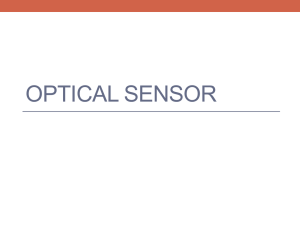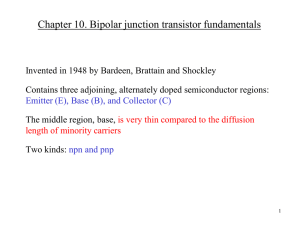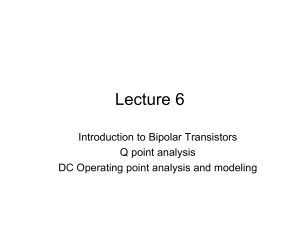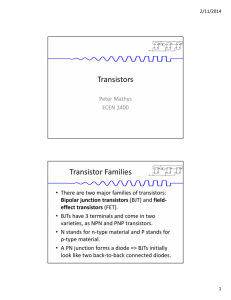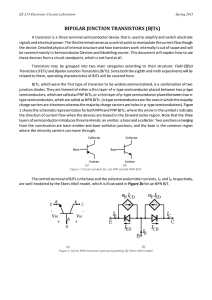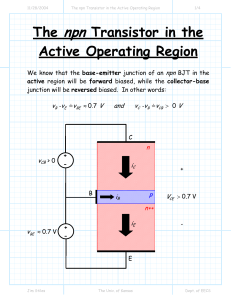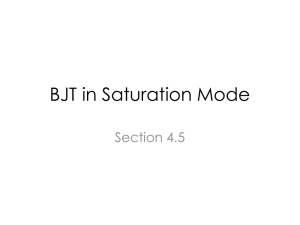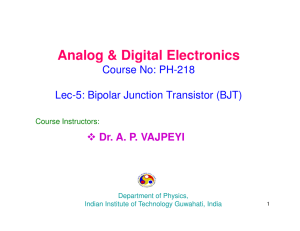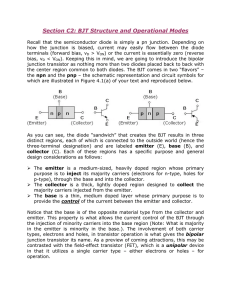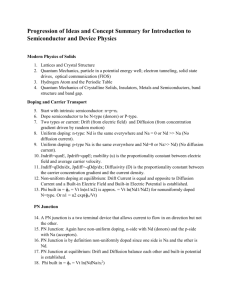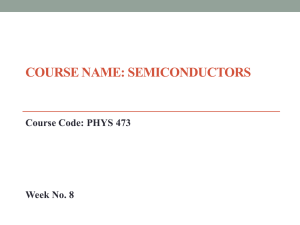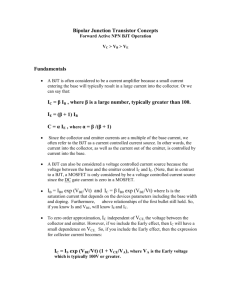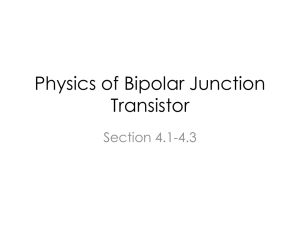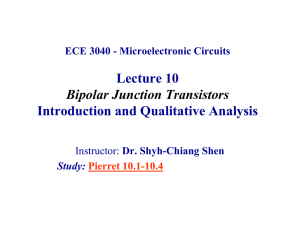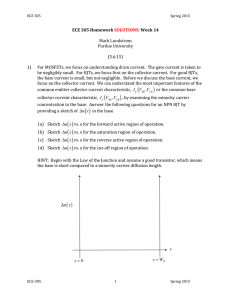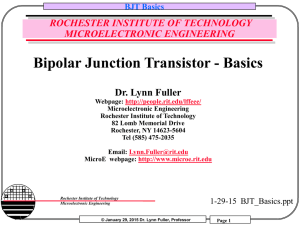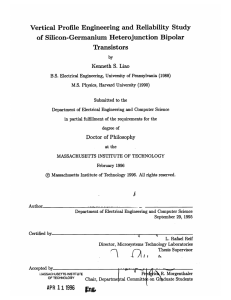Bipolar Junction Transistors
advertisement
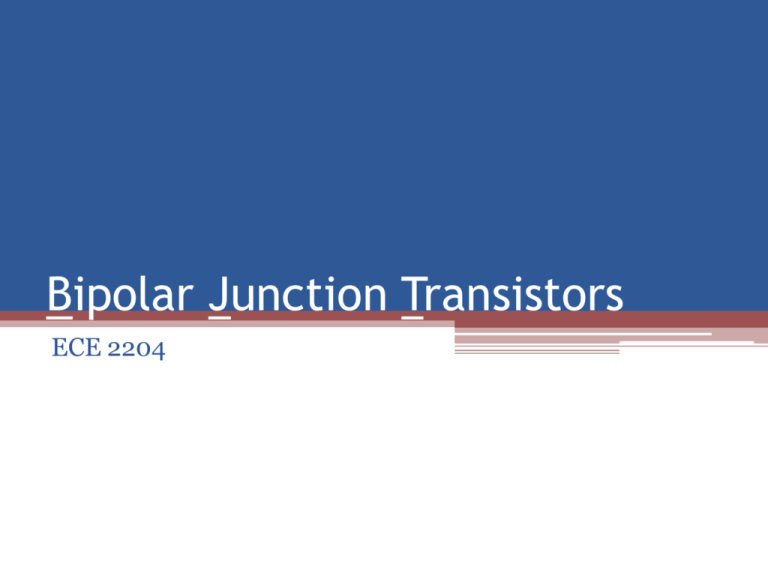
Bipolar Junction Transistors ECE 2204 Three Terminal Device • Terminals ▫ Emitter The dominant carriers are emitted from the region (equivalent to the Source in a MOSFET) ▫ Base These now minority carriers travel through the base region Some recombine in the base, forcing a base current to flow ▫ Collector The remaining carriers from the emitter are collected from this region (equivalent to the Drain) Types of BJTs • n-p-n ▫ Emitter is n+ type Electrons flow from the emitter towards the collector ▫ Base is p type Some of the electrons from the emitter recombine with the holes in the base ▫ Collector is n- type • p-n-p ▫ Emitter is p+ type Holes flow from the emitter towards the collector ▫ Base is n type Some of the holes from the emitter recombine with the electrons in the base ▫ Collector is p- type Cross Section of npn Transistor Cross-Section of pnp BJT Circuit Symbols and Current Conventions npn pnp The one equation that will always be used with BJTs* I E I B IC * With the exception of reverse active. Then, the equation becomes IC I E I B Circuit Configurations I-V Characteristic: npn Transistor IC = b IB when VCE > VCEsat Measured in a Common Emitter Configuration Modified from https://awrcorp.com/download/faq/english/examples/images%5Cbjt_amp_oppnt_bjt_iv_curves_graph.gif Nonideal I-V Characteristic ICEO – leakage current between the collector and emitter when IB = 0, usually equal to the reverse saturation of the base-collection diode Effects from a change in the effective distance between emitter and collector VA – Early Voltage b is not a constant BVCEO – breakdown voltage of the transistor Modified from: http://cnx.org/content/m29636/latest/ Current-Voltage Characteristics of a Common-Base Circuit In Forward Active Region: IC = aF IE, where aF < 1 Modified from Microelectronic Circuit Analysis and Design by D. Neamen Simplified I-V Characteristics Modes of Operation • Forward-Active ▫ B-E junction is forward biased ▫ B-C junction is reverse biased • Saturation ▫ B-E and B-C junctions are forward biased • Cut-Off ▫ B-E and B-C junctions are reverse biased • Inverse-Active (or Reverse-Active) ▫ B-E junction is reverse biased ▫ B-C junction is forward biased npn BJT in Forward-Active BE junction is forward biased BC junction is reverse biased Currents and Carriers in npn BJT iEn = iE – iEp iCn = iC – iCp where iCp ~ Is of the base-collector junction iEn > iCn because some electrons recombine with holes in the base iB replenishes the holes in the base Current Relationships in Forward Active Region iE iC iB iC b F iB iE (1 b F )iB iC a F iE aF bF 1 aF DC Equivalent Circuit for npn in forward active npn BE qV I E I S e nkT 1 pnp EB qV I E I S e nkT 1 Simplified DC Equivalent Circuit npn pnp IC = bF IB AND IE = (bF +1) IB VBE = 0.7V VCE ≥ 50mV IB ≥ 0mA VEB = 0.7V VEC ≥ 50mV IB ≥ 0mA Saturation npn pnp IC ~ ISC VBE = 0.75V VCE = 50mV IC ≤ bF IB VEB = 0.75V VEC = 50mV Cut-Off IC = IB = IE = 0 VBE ≤ 0.6V VEB ≤ 0.6V
